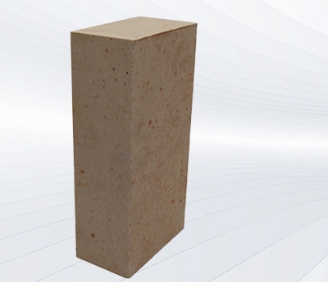- 15
- Sep
Zirconium Mullite Brick
Zirconium Mullite Brick
Product advantages: high bulk density, large volume, high mechanical strength at room temperature and high temperature, good thermal shock stability, low reheating shrinkage and high temperature creep, and good chemical stability and resistance to alkaline media.
Supply advantage: Fully automatic intelligent refractory production line, nationwide delivery
Product application: Mainly used in key parts of kilns such as glass kilns, glass fiber kilns, rock wool fiber kilns, garbage incineration kilns, ceramic frit glaze kilns, electric furnaces, etc.

product description
Zirconium mullite bricks improve the structure of mullite by introducing ZrO2 into A12O3-SiO2 bricks, which can improve the chemical resistance, thermal shock resistance and reduce the coefficient of expansion of mullite. It is generally made by electrofusion. It is also produced by the sintering method.
Zirconium mullite brick is a special refractory material made by using industrial alumina and zircon concentrate as raw materials and introducing zirconia into the mullite matrix through a reactive sintering process.
Zirconium mullite bricks introduce zirconia into mullite bricks, and the phase change toughening of zirconia can greatly improve the high-temperature mechanical properties of mullite materials. Zirconia promotes the sintering of mullite materials. The addition of ZrO2 can accelerate the densification and sintering process of ZTM materials due to the generation of low melting point substances and the formation of vacancies. When the mass fraction of zirconium mullite brick is 30%, the relative theoretical density of the green body fired at 1530°C reaches 98%, the strength reaches 378MPa, and the toughness reaches 4.3MPa·m1/2.
Zirconium mullite bricks are made from industrial alumina and zircon by reaction sintering. Because the reaction and sintering are carried out at the same time, the process control is difficult. Generally, zirconium mullite bricks are heated at 1450°C to make them densified during firing, and then heated to 1600°C for reaction. ZrSiO4 decomposes into ZrO2 and SiO2 at a temperature greater than 1535°C, and SiO2 and Al2O3 react to form mullite Stone, because a part of the liquid phase appears during the decomposition of ZrSiO4, and the decomposition of ZrSiO4 can refine the particles, increase the specific surface area, and promote sintering.
Physical and chemical indicators
| project | Anti-stripping zircon brick | High quality zircon brick | Ordinary zircon brick | Zirconia Corundum Brick | Zirconium Mullite Brick | Half zirconium brick | |
| ZrO2% | ≥65 | ≥65 | ≥63 | ≥31 | ≥20 | 15-20 | |
| SiO2% | ≤33 | ≤33 | ≤34 | ≤21 | — | ≤20 | |
| Al2O3% | — | — | — | ≥46 | ≥60 | 50-60 | |
| Fe2O3% | ≤0.3 | ≤0.3 | ≤0.3 | ≤0.5 | ≤0.5 | ≤1.0 | |
| Apparent porosity% | ≤16 | ≤18 | ≤22 | ≤18 | ≤18 | ≤20 | |
| Bulk density g/cm3 | 3.84 | 3.7 | 3.65 | 3.2 | 3.2 | ≥2.7 | |
| Compressive strength at room temperature Mpa | ≥130 | ≥100 | ≥90 | ≥110 | ≥150 | ≥100 | |
| The rate of reheating change% is not more than (1600℃×8h) | ±0.2 | ±0.3 | ±0.3 | ±0.3 | ±0.3 | ±0.3 | |
| Load softening start temperature ℃ (0.2MPa, 0.6%) | ≥1700 | ||||||
